




Massive investments in agricultural research and development are the only way to combat world hunger, philanthropist Bill Gates argues in a provocative blog post.
Humanitarian assistance in the form of food aid was already skyrocketing before the war in Ukraine, he notes. That trend is expected to continue until at least 2030.
In sub-Saharan Africa, agricultural productivity has not increased at a rate where the harvest can feed the domestic population, he said.
That forces Africa to import $23 billion US worth of food annually.
Most African farmers lack access to irrigation or fertilizer and subsist on small plots of land.
The next major shock to global supply chains and African food supplies will not be a war, Gates predicts. He fears that droughts and heat waves brought on by climate change could wipe out many farms, posing the “largest threat to food production since the invention of agriculture.”
Maize, a staple that reportedly accounts for 30 percent of the calories consumed by people in sub-Saharan Africa, is particularly vulnerable, Gates writes.
Rising temperatures could cause major reductions in yields, according to the Agriculture Adaptation Atlas. That could lead to 32 million more people in Africa being hungry by the end of the decade.
Gates’ prescription for combatting this challenge includes new seed varieties and other forms of innovation. “Farmers need support in many different ways, such as micro-financing so they can afford to buy fertilizer,
or rural infrastructure like new roads so their crops can be easily transported to market,” he writes.

Gates also touts the promise of artificial intelligence to speed up plant breeding and analyze soil samples and satellite imagery to determine what should best be grown where.
All of that will require enormous amounts of investment. The World Bank estimates that micro, small and medium-sized businesses in the Global South have unmet financing needs of more than $5 trillion annually.
So financial innovation will be required from many corners. Expect to hear more soon from MEDA on a new initiative in that regard.
One of the Gates Foundation’s annual projects is to publish a report on the world’s progress toward the United Nations Sustainable Development Goals. You can read the Gates Foundation’s 2022 Goalkeepers report at this web address: https:// www.gatesfoundation.org/ goalkeepers/report/2022-report/
Schlegel praises MEDA
Bob Schlegel, a Canadian-born entrepreneur who made his fortune in several businesses in Texas, shares lessons learned and his life story in his fascinating memoir Angels and Entrepreneurs, which is reviewed on page 22 of this issue. He praises MEDA’s work in a chapter explaining his family’s approach to charitable giving.
Schlegel writes that his family admires MEDA “because it invests in programs that enhance the lives of people in need by helping them become more self-sufficient. We’ve found that this group gives a great return on donated dollars.”
“We believe our thoughtful donations to organizations like this can have an impact that will outlive us all.”
Sarona’s leadership changes
Sarona, the private equity firm that grew out of MEDA, has announced leadership and partnership changes following the retirement this summer of its founder, Gerhard Pries.
Pries, a former chief financial officer of MEDA, led Sarona for a dozen years after it was spun out of MEDA’s finance department. He will remain as chair of the Sarona board and a member of the organization’s investment committee.


Serge LeVert-Chiasson, Pries’ longtime colleague, assumes the role of managing partner. As part of the succession, three other Sarona team members have joined the firm’s partnership. These
are Patrick Hergt, Sarona’s new head of business development, Mat LeRoux, now head of finance and operations, and Singapore-based Ralitsa Rizvanolli, who becomes head of impact mandates.
MEDA still owns a 10 percent stake in Sarona. .
The winning entries in the #MEDAField2Fork2022 contest showcase agriculture in Bangladesh, Zimbabwe, India and Uganda.
This picture of Bangladeshi quail farmer Shila Ranidash is one of Dave Klassen's winning photos.

Farming to keep fields fertile Kansas’s Sustain-a-Grain promotes new perennial wheat.

Eunice Culp reflects on her 51-year career at Everence Financial. By J.B. Miller
Towards healthy accountability
Pennsylvania pastor Nathan Good reflects on the path to agreed-upon norms in modern society.
Shorter good reads
22 Roadside stand 24 Soul Enterprise 22 Books in brief
‘Ministry’ is not defined by who signs our paycheck.
By Karen Swallow Prior(Religion News Service) — Earlier in the pandemic, the labor shortage was most noticeable at eating establishments, from local diners to Domino’s. As Americans returned to pre-pandemic levels of air travel, there were suddenly too few pilots, crew and air traffic controllers. The delivery of numerous goods and services slowed in part because of shipping snarls, but also because truck drivers were scarce.
Now, in my community and in others around the country, the labor shortage means too few emergency workers as well as reduced emergency medical flights
This last shortage could lead to much more dramatic consequences than doing without a restaurant meal, or a delayed or canceled vacation (as distressing as that can be). Lack of emergency workers could mean the difference between life and death in some situations.
I’m not an economist nor a labor expert; I have no insights into why these shortages exist, how severe they are or how long they might last.
But I do think the problem offers an opportunity for Christian ministry: The shortages point to the need in our world for tentmakers. Not literal tentmakers (perhaps), but in the metaphorical sense of holding a nominal job while dedicating oneself to serving others.
The metaphor “tentmaker” comes from the life of Paul. Before his conversion to Christianity,
Paul had trained as a rabbi. It was customary at the time for rabbis to learn a trade. Whether or not Paul learned to make tents then or after his conversion isn’t clear. But Scripture does report that after his conversion as he underwent his mission to spread the gospel and teach in the church, Paul supported himself through tentmaking — literally.
Being a tentmaker not only gave Paul financial freedom in his ministry but also allowed him not to burden the church financially. In the New Testament’s Book of Acts, Paul tells the elders of the church at Ephesus, “I have not coveted anyone’s silver or gold or clothing. You yourselves know that these hands of mine have supplied my own needs and the needs of my companions.”
Yet, there is another reason Christians might consider being “tentmakers.”
Christian history has a robust theology of vocation, particularly from Martin Luther. Luther taught, as Gustaf Wingren says in his 1942 book “Luther on Vocation,” that “God doesn’t need your good works, but your neighbor does.”
In other words, through our work, we serve our neighbor.
Now, of course, working in what we often call “full-time ministry” is a good, honorable and needed means of serving our neighbors. But it is only one way of doing so.
In “Vocation: The Setting for Human Flourishing,” Michael Berg tells a story about a driver who comes upon a traffic jam caused by road construction that has reduced a long mountain highway to a single lane. Just as this driver is about to be let through, the flagman turns his sign around to the “stop” side, so the driver finds himself pulled up at the head of a new waiting line, next to the flagman.
Settling in for a long wait, the driver begins to talk to the flagman, whose job it is to stand there all day, day in and day out, in all kinds of weather. The driver asks how he can tolerate such a boring job. To the driver’s surprise, the flagman replies, “I love this job! Love it. You know why? Because it matters. I keep people safe. I care about these guys behind me, and I keep them safe. I also keep you safe, and everybody else on all those cars behind you. I get to make a real, tangible difference every day.”
Not long ago, an acquaintance of mine observed on Twitter that after going to college and seminary and serving in ministry for 10 years, he was surprised not only to find himself working as a barista, but to feel blessed to do so. I responded to his post by saying, “Glad to know you are in full-time ministry. As we all should be.”
Based on the positive and encouraged responses I saw to
this thread, this is a message that needs to be repeated more often. “Ministry” is not defined by who signs our paycheck.
Ministry is good, honorable and needed to serve our neighbors as accountants, restaurant servers, pilots, flight attendants, emergency workers, bank clerks, call center workers and teachers. I could
tell you stories for days about the ministry my husband does as a public school teacher who regularly has in his classroom fatherless, motherless, hungry and hurting students.
An encouraging development over the past decade is that more people are going to seminary for the purpose of applying their
“Money should never be separated from values. Detached from values it may indeed be the root of all evil. Linked effectively to social purpose it can be the root of opportunity.”
— Rosabeth Moss Kanter, author, Harvard Business School professor
“In our technological world, we have overdosed on leisure and have no rest.”
— Andy Crouch
“Entrepreneurship is a rare skill, mindset. Anyone who is blessed to be an entrepreneur has a divine calling.”
— Dale Dawson, Bridge2Rwanda
“I do not believe one can settle on how much we ought to give. I am afraid the only safe rule is to give more than we can spare.” — C.S. Lewis
“If you’re not a servant leader, you’re not a leader at all.” — Pat Lencioni
theological education to these kinds of occupations outside the church.
The world needs workers. And who is more called to serve their neighbors than those who are called to serve the Lord in doing so? It is but another way of fulfilling the exhortation of Jesus given in the Gospel of Matthew, when he says, “Let your light shine before others, so that they may see your good works and give glory to your Father who is in heaven.”
Our good works might change a life. Or even save one. .
Copyright Religion News Service 2022. Reprinted with permission.
Volume 52, Issue 6 November December 2022
The Marketplace (ISSN 0199-7130) is published bi-monthly by Mennonite Economic Development Associates at 532 North Oliver Road, Newton, KS 67114. Periodicals postage paid at Newton, KS 67114. Lithographed in U.S.A. Copyright 2021 by MEDA.
Editor: Mike Strathdee Design: Ray Dirks
Postmaster: Send address changes to The Marketplace 33 N Market St., Suite 400, Lancaster, PA 17603-3805
Change of address should be sent to Mennonite Economic Development Associates, 33 N Market St, Suite 400, Lancaster, PA 17603-3805
To e-mail an address change, subscription request or anything else relating to delivery of the magazine, please contact subscription@meda.org
For story ideas, comments or other editorial matters, email mstrathdee@meda.org or call (800) 665-7026, ext. 705
Subscriptions: $35/year; $55/two years. Published by Mennonite Economic Development Associates (MEDA). MEDA’s economic development work in the Global South creates business solutions to poverty. MEDA also facilitates the connection of faith and work through discussions, publications and conventions for participants.
For more information about MEDA call 1-800-665-7026. Web site www.meda.org
Want to see back issues or reread older articles? Visit https://www.meda.org/download-issues/
The Marketplace is printed on Rolland Enviro® Satin and is made with 100% post-consumer sustainable fiber content, FSC® Certified to help meet client sustainability requirements, Acid Free, Elemental Chlorine Free


The #MEDAField2Fork2022 photo contest asked readers to submit pictures highlighting the agrifood sector, depicting the production, processing, distribution, or sale of food.
The winning entries featured on the cover of this issue and over the following several pages provide a glimpse into agriculture in Bangladesh, Zimbabwe, India, and Uganda. The accompanying text was taken from information provided by the photographers.
Dave Klassen took these winning photos while working on contract with Mennonite Central Committee (MCC) in Bangladesh and Zimbabwe.
Farmers in northern Bangladesh attend a yard meeting as part of training activities to improve livelihoods and agriculture production using techniques that are safe for the environment.
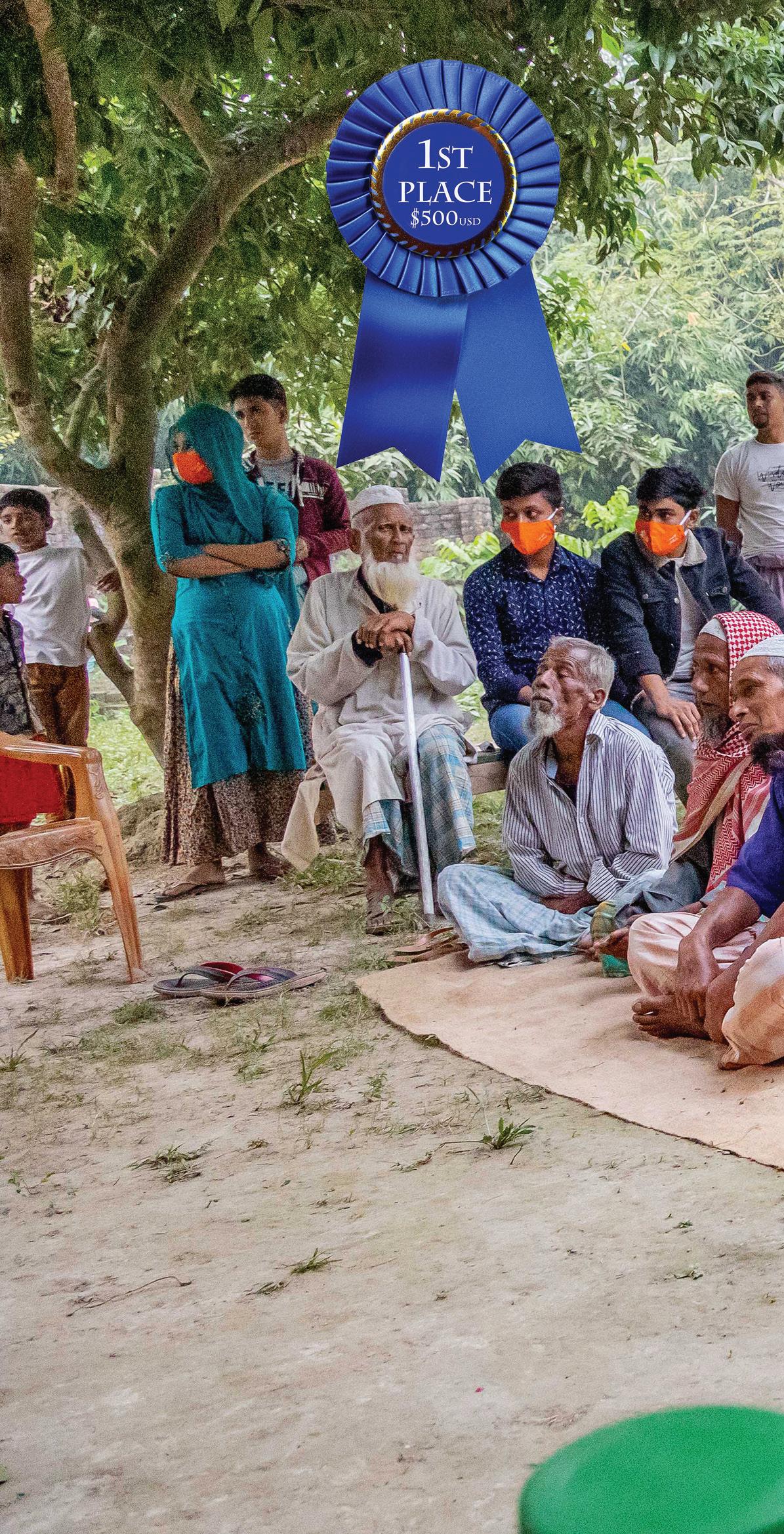
Saving seeds for the next planting season using the pictured plastic containers helps people gain control over the kinds of seeds they use and reduces the cost. Project partner Poll Unnoyan Prokolpo helps support 700 farm families by facilitating training on practices such as integrated pest management, for more profitable vegetable production and better health.
Shila Ranidash raises quail and harvests eggs they lay. Smallscale farmers in Bangladesh are being introduced to quail because of many advantages the birds have over chicken.
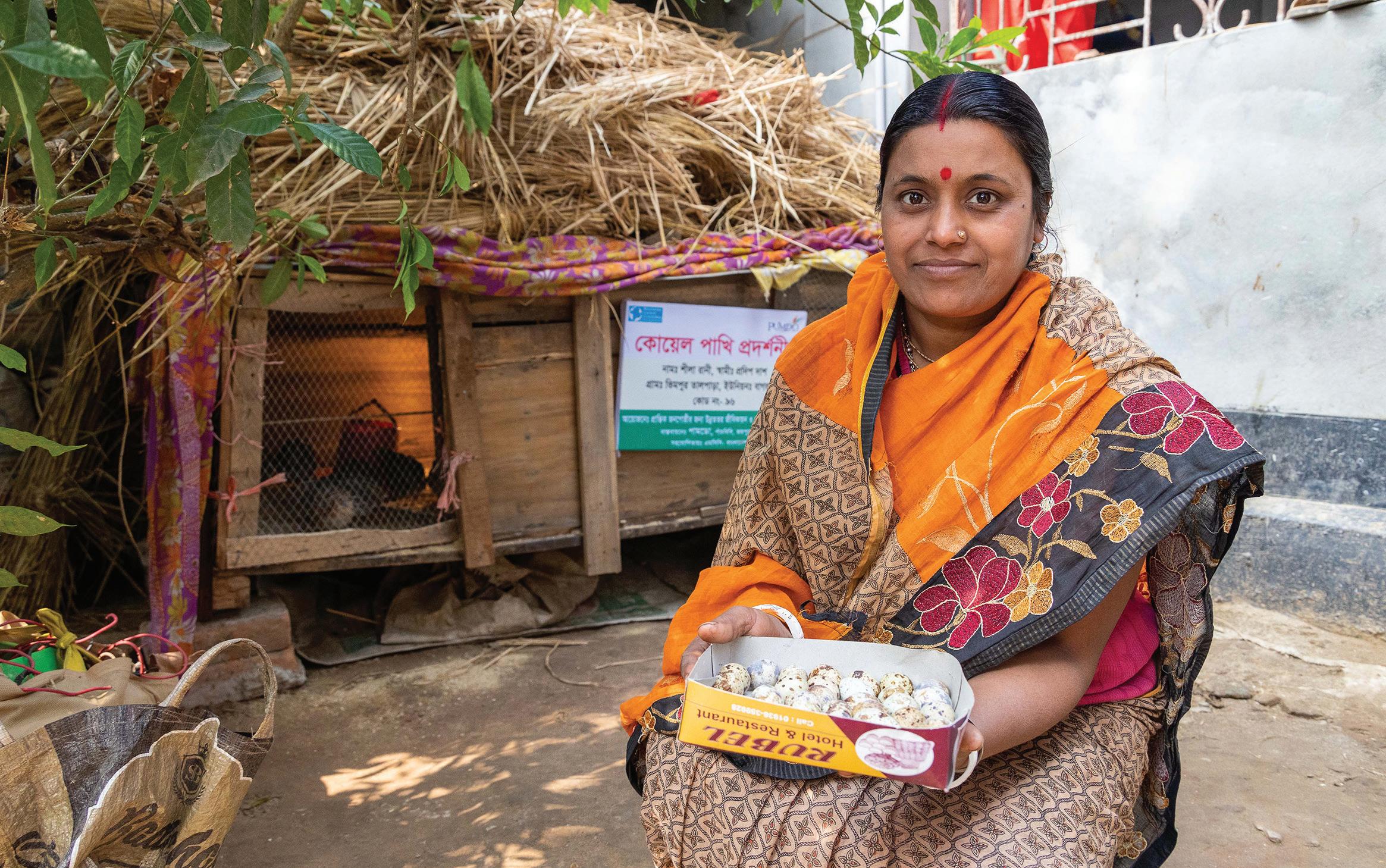
Quail lay 250-300 eggs a year, require limited space, are resistant to disease and consume a small amount of food.
This project, facilitated by the Peoples Union of the Marginalized Development Organization, supports food security, basic infrastructure development, and technology skills training. It also builds both capacity and self-reliance of farmers in marginalized communities.
Rutendo Ngundu works inside a greenhouse operated by the Sandra Jones Centre in Bulawayo, Zimbabwe.

The centre runs a vocational training program for young girls and women, aged 16-22, who have experienced some form of abuse, poverty and most likely have no education.
Training participants are given a greenhouse to look after from planting until harvest. After the sale of the produce, each is given the profit and the centre retains the initial capital for the next participant.
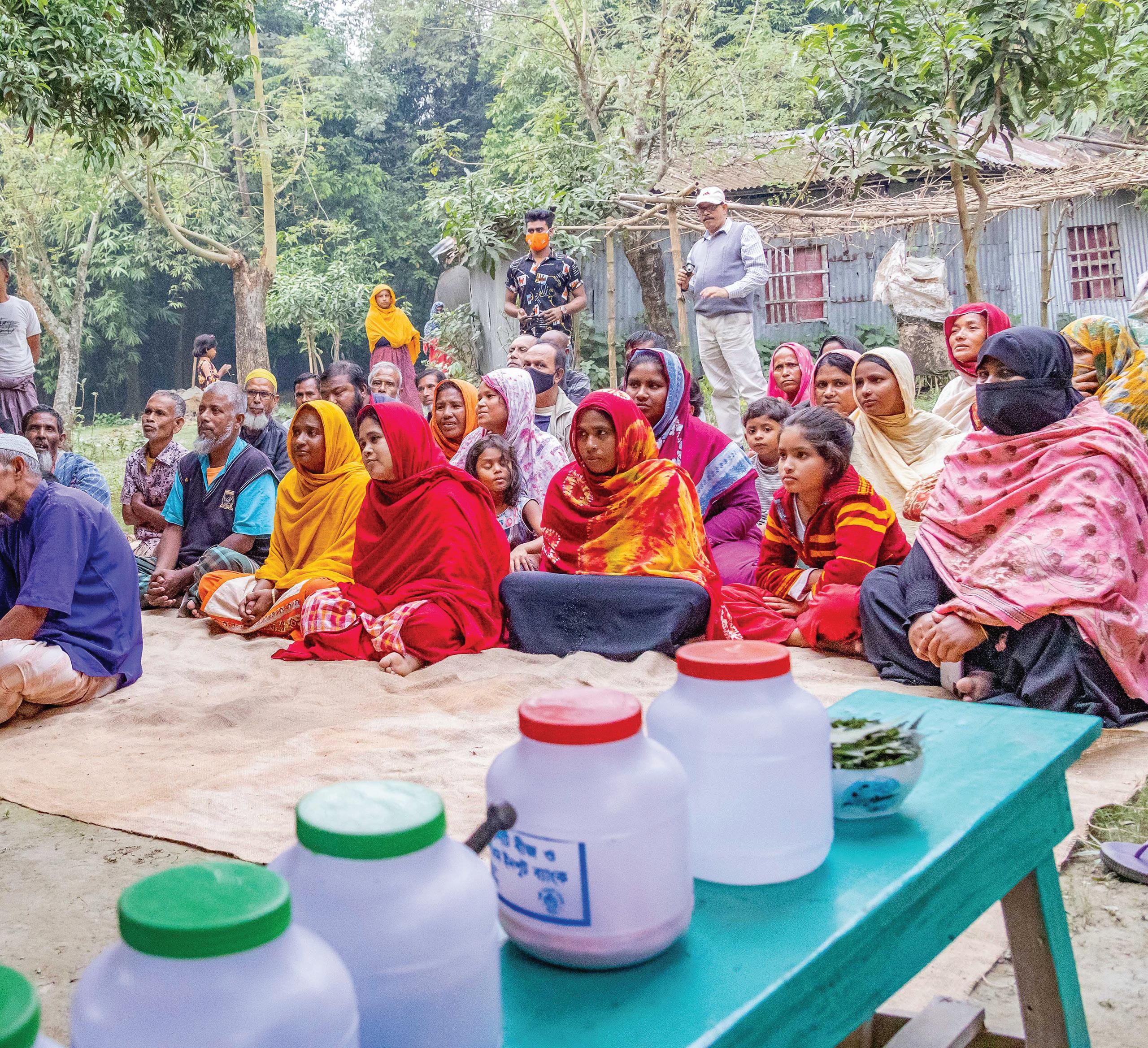
Radha Vyas, a graduate student at Dallas Theological seminary, took these photos during a trip to Gujarat state in northwestern India.
Fruit and vegetable stands and all kinds of animals are a frequent scene throughout India.

Animals like this calf appear to be unattended. They are let out in the early part of the day and return home at the end of the day.
Cows are often kept at home in this majority Hindu nation to provide milk for families.

Farmers travelling with their water buffalos, camels and cows set up carts laden with the fruit and vegetables from their farms all over the city for city dwellers to purchase.
While walking through a lengthy riverside outdoor marketplace in the streets of Ahmedad, the fifth most populous city in India, Vyas saw a boat filled with brown coconuts steered by a solitary young boy. The river, otherwise empty, stood in contrast to a market teeming with people.
The young boy stood out to her because of his small haul and the smallness of his own size. Children can often be seen working for their families in Indian markets and farms. Brown coconuts, sometimes used in Hindu rituals, are also used to make chutneys, desserts and cooking oils.

of tea bushes while living in Uganda.
Rolling hills covered in a sea of green tea bushes can be seen while driving through southwestern Uganda. Tea, one of the country’s big cash crops, was introduced by the British in the early 1900s.
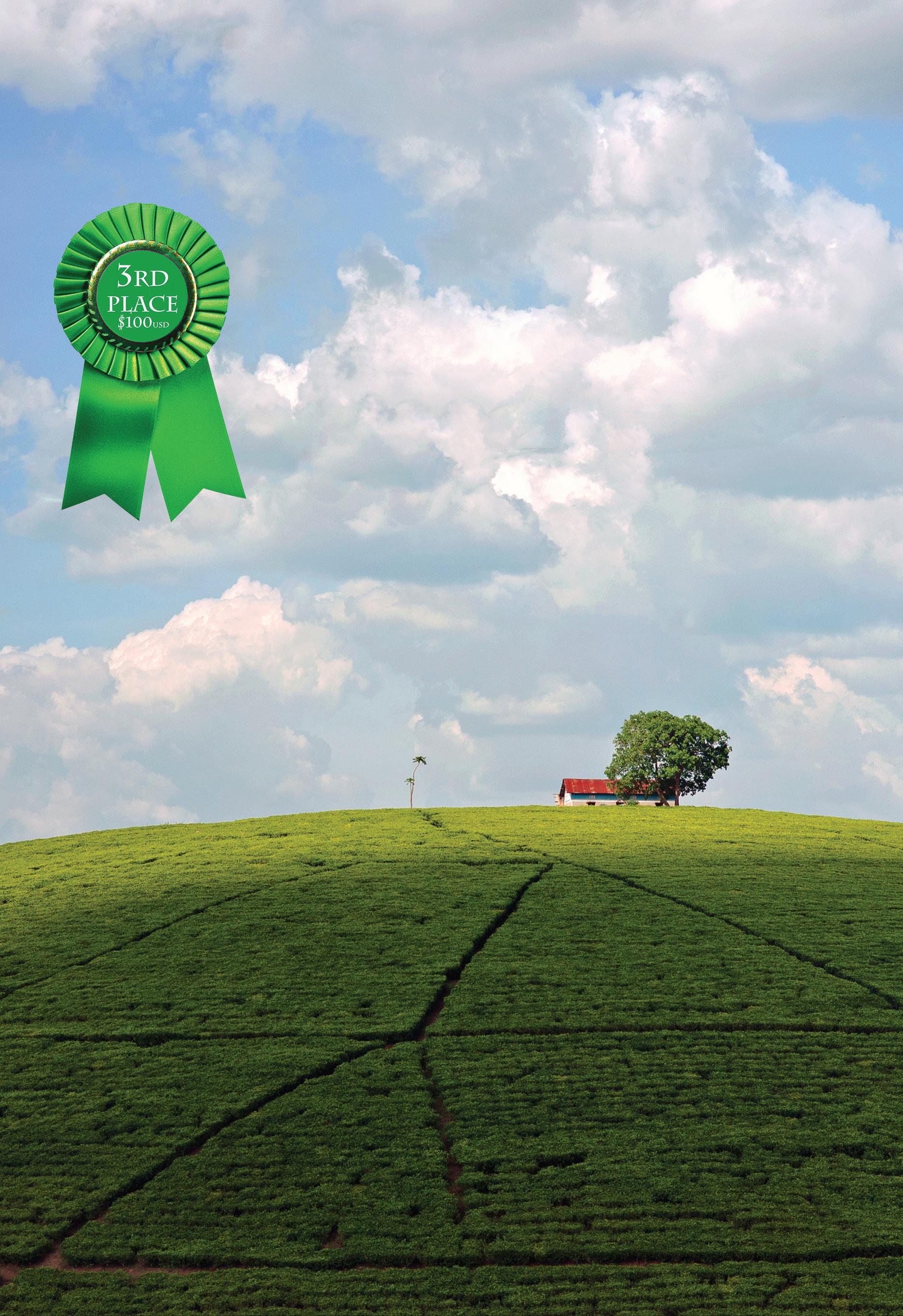
About one million people directly derive their livelihood from tea growing. Much of the production of this popular beverage is labor intensive.

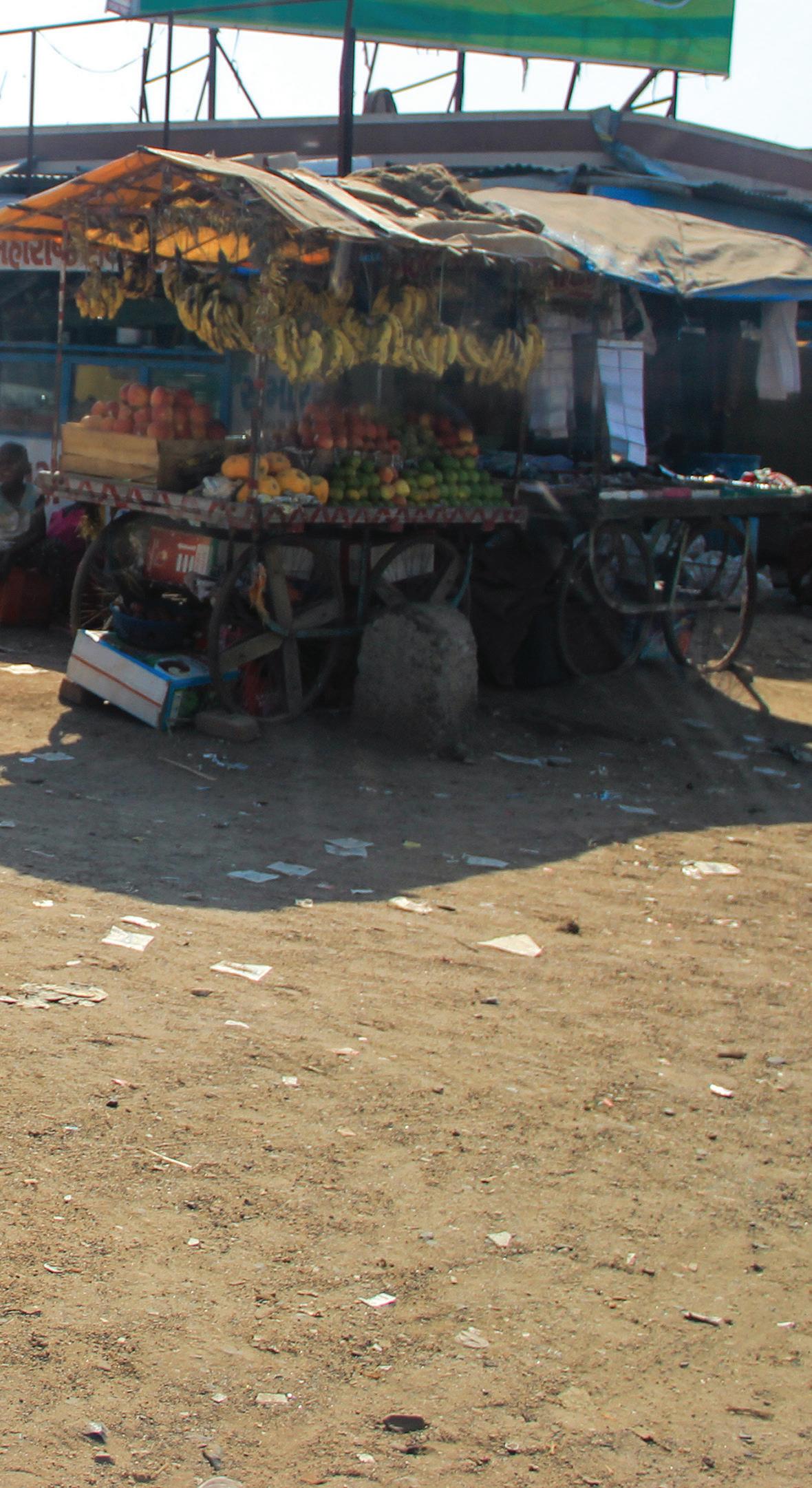
Tea estates produce 54 per cent of the tea, while smaller “mom and pop”
operations account for 46 percent of total acreage. Uganda mostly produces black tea. The difference between green and black tea has to do with the way each is processed. Green tea is unfermented (not oxidized), while black tea is completely fermented or oxidized.
Tea is predominantly grown in high-altitude locations. Stable temperatures, fertile soils and two rainy seasons over much of the country can lead to several crop harvests a year.
Wheat has been one of the world’s most important food staples for thousands of years.
But erosion on frequently tilled land is a serious problem in several areas of the world.
By some estimates, the United States has lost as much as one-third of its topsoil over the past 100 years.
Wind and water have ravaged and degraded formerly fertile fields.
Kansas, one of the US’s major wheat-growing states, loses 190 million tons of topsoil each year.
Three Kansas men have developed a business to address these problems.
Sustain-a-Grain is working to promote and help build the use of an alternative crop. Kernza fits into the growing practice of regenerative agriculture.
Kernza is a relatively new perennial cereal grain. Growing it will help prevent erosion, improve soil fertility and hold soil in place. Its roots, which can grow as deep as 10 feet, are said to improve soil structure.
Early this year, the MarthaStewart.com lifestyle blog praised Kernza as being “a super grain that’s good for you and the planet.” The story noted that Kernza is high in protein and antioxidants, with eight times the amount of insoluble fiber as wheat.
A 2017 study found that each acre of Kernza sown sequesters between 300 and 1000 pounds of carbon.
Another study found that Kernza production can result in a 95 percent reduction in nitrogen leaching from the soil compared to annual grain production.
SmuckerKernza is harvested from intermediate wheatgrass. It was developed by The Land Institute, a Kansas agriculture research non-profit.
Sustain-a-Grain is headed up by Peter Miller, Brandon Kaufman, and Brandon Schlautman. Miller has a background in specialty grains. Kaufman is a farmer, and Schlautman works on plant breeding.

The idea of a company based on Kernza arose from a chat Kaufman and Schlautman had at a wedding.
Schlautman, a researcher at the Land Institute, challenged Kaufman to consider planting a new crop that could be harvested for multiple years.
Kaufman, who has a history of growing niche crops on his farm, liked the idea of getting multiple harvests from the same acreage. And there is another benefit.
Because the stubble remains in the field, it provides winter feed for his cattle. That is worth several hundred dollars an acre at a time when hay is expensive. “They (cattle) have four legs and can do it (graze) on their own,” he said.
Sustain-a-Grain sells Kernza seed to interested farmers and provides agronomic support, including advice on how best to grow the crop. It also offers to buy the grain and do processing, then market it to food and beverage firms.
Kernza is being grown commercially in Kansas, Minnesota, Colorado, Nebraska, Iowa, and Montana. It is also being tested on trial plots at universities in parts of the US, Canada, France, and the United Kingdom.
While the total amount of Kernza under cultivation is small
so far — 4,000 acres yielding over 600,000 pounds of grain — that might grow quickly. Acreage will increase by 50 to 100 percent this fall, a spokesperson for The Land Institute said this summer.


“We have a waiting list of farmers,” says Miller, Sustain-aGrain’s CEO. “Farmers are very interested in growing it.”
One of the biggest choke points preventing Kernza from being grown by more farmers is good processing, he said.
Dehulling and cleaning of the grain don’t require special equipment. But the facilities that can do the job are not that common. “We’re investing in kind of creating these regional hubs to do that dehulling and cleaning.”
Breeding will soon get the seed to the point where the hull will come off naturally, he said.
Kaufman has been growing Kernza for five years. He has seen major improvements over the past
three years. The seed now being harvested is about 85 percent dehulled. That is clean enough for some uses.
Kernza is now about the length of a rye kernel, but not as plump as a grain of wheat. Ongoing breeding
programs aim to continue to increase grain size, yield, and standability. Standability is the ability of a plant to stand unsupported.
The other major business challenge facing Sustain-a-Grain is finding committed buyers. Kernza
is a high-cost ingredient compared to other specialty grains. Currently, Kernza costs 80-90 percent more than specialty grains such as organic quinoa. That restricts Kernza’s use to craft products and as a small portion of a flour mix.
Yet Kernza has found receptive end users in specialty bread flour mixtures, egg noodles, and craft brewing.
Miller thinks the gap between the price of Kernza and other specialty grains could close within a few years. The Land Institute is aiming for a 20 percent yield improvement each breeding cycle.
Farmers are not typically displacing their regular wheat crop in order to grow Kernza. Much of the current acreage is on marginal ground or land that is used to pasture cattle.
Kernza could be grown on the same land for more than a decade.
But most farmers will only let it grow in the same spot for three to five years, Miller said. As improved varieties become available, it’s going to make sense for farmers to rotate a plot out of Kernza, he said. They would do a year of corn and then a year of soybeans and then come back to Kernza with the

Kernza could be joined by other perennial grains in farmer’s fields within the next 10 to 15 years, agriculture industry observers say.
In China, perennial rice is already being grown with competitive yields. Perennial versions of sorghum, the fifth most common grain in the world, and pigeon pea, a tropical legume, are also being grown.
Researchers at The Land Institute, the not-for-profit Kansas organization that created Kernza, are working on other crops. Perennial versions of silphium, a sunflower relative, and Sainfoin, a pulse crop currently used as cattle forage, are being developed.
“There’s going to be a lot of opportunities (for farmers to grow new perennial grains) coming down the road,” predicts Kansas farmer Brandon Kaufman.
Kernza is a cool-season intermediate wheatgrass. It requires a period of at least six weeks with temperatures below 40 degrees Fahrenheit in order to produce grain.
Kernza’s name comes from the combination of two words. The first is the word Konza, in recognition of the Konza Prairie Biological Station. At Konza, Land Institute co-founder Wes Jackson saw an ecosystem that “suffered little loss and required few inputs and dreamt of agriculture that mimicked that natural system.”
latest improved seed.
Martin Entz, an agronomist at the University of Manitoba, has studied how Kernza can be intercropped with legumes. Kernza has a role in managing diverse farm landscapes, he said.
As interest in integrating crops and livestock and minimizing agriculture’s environmental footprint continues to grow, Kernza is a tool for farmers to consider, he said.
Kernza is most viable for farmers who can graze their cattle on the stubble after a crop is harvested, he said.
Higher crop yield or governments offering farmers financial incentives to grow more environmentally friendly crops could increase its viability.
At the same time, large food processors such as General Mills are aware of Kernza and are waiting to see how it develops, he said.
Getting a company like General Mills to replace a small portion of the wheat in its cereal with Kernza would be a breakthrough, Schlautman said.
He also points to franchise restaurants across the US that advertise their sustainability efforts. Having one of those chains use Kernza for even one percent of the flour they put into buns or other bread products would spur rapid growth in Kernza production.
The second word used to create the name Kernza is kernel, the part of the plant that humans rely on for sustenance.
To learn more visit https://www.kernza.org/ https://www.sustainagrain.com/
“We know that Kernza is about the best thing we can grow on most of our acres ecologically,” Schlautman said. “We just need the food companies to kind of stand behind a lot of the promises and commitments that they’ve made in recent years in terms of improving their carbon emissions and sustainably sourcing their supply chains.” . https://landinstitute.org/ .
When Eunice Culp graduated from high school in 1970, she originally had plans to go to college. Instead, she decided to work for a year or two.
That fall, she went to work for Mennonite Mutual Aid (MMA), now Everence, an organization that primarily provided health insurance to Mennonites.
Nearly 52 years later, she retired from Everence as vice president of human resources. Today, Everence is a financial service company that helps people integrate faith and values with their financial decisions.
Long before digital records were the norm, Culp’s first job was microfilming customer files, the company’s first step in eliminating paper records. Within a couple of years, she was promoted to records manager.
Her leadership qualities were recognized throughout the organization and in 1985 she agreed to spend part of her time working on personnel matters. This soon became a full-time position — in a short time, she was named personnel manager.
As the company grew, more staff was added and in 1996, Culp was named vice president of human resources. In this position, she also supervised staff training and development, licensing, records and facilities.

For Culp, leading the human resources division was more than a
career — it was her calling. When asked why she stayed for 51 years, she stated, “Everence is a faithbased organization, and for me the tenets of servant leadership — serving God and serving others,
is foundational to my leadership style. It’s about modeling the way, serving from the heart, and never abusing power.”
Maintaining a company culture that reflects faith-based values was
While working for the same company for 51 years is somewhat of an anomaly, Everence has had several employees with tenures over 40 years. What keeps people at a company for most, if not all, of their careers?
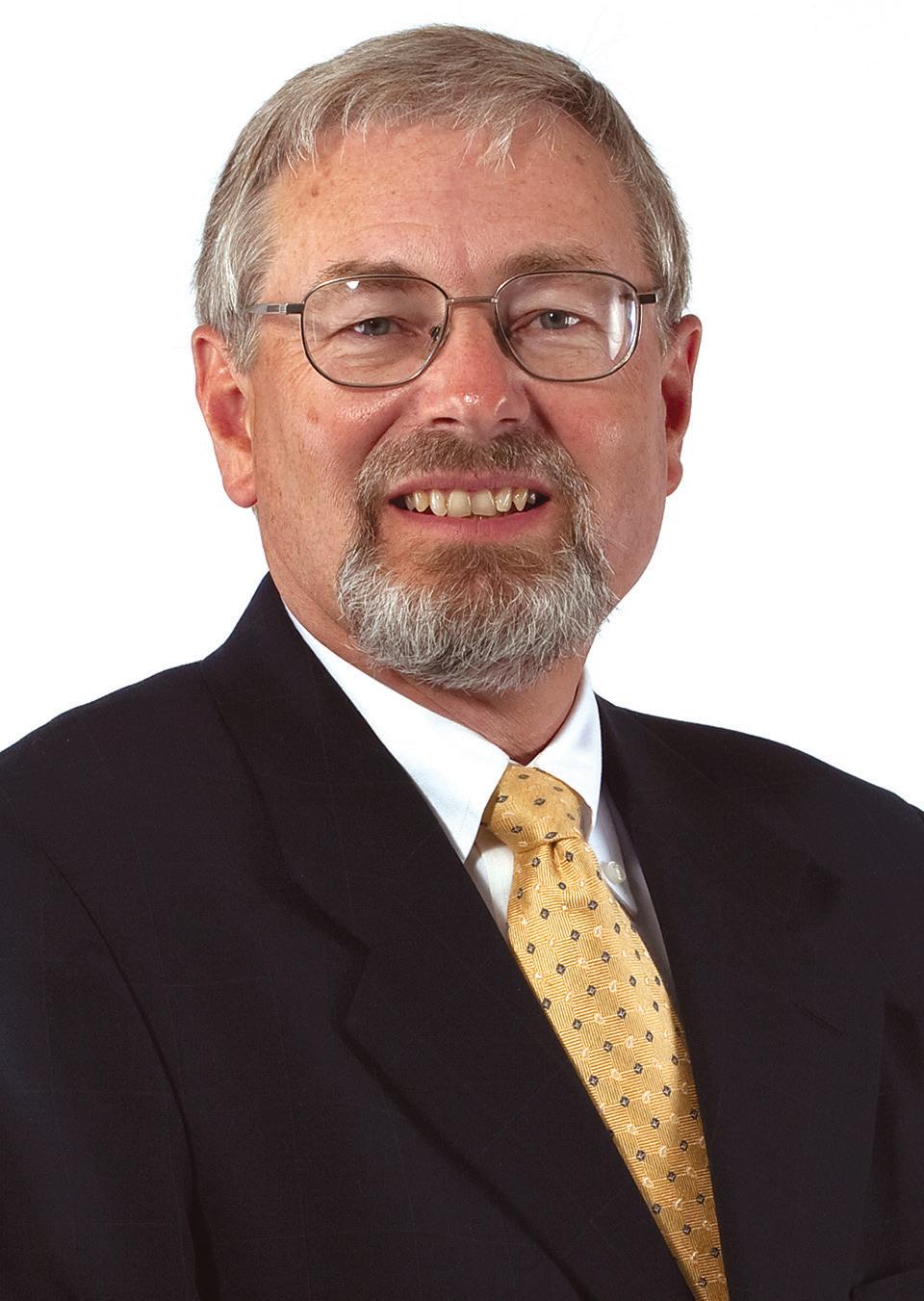
As a recent MBA graduate, Del King, former senior investment manager, was attracted to the mission of MMA, Everence’s predecessor firm. “The faith connection was important,” he said. “I always felt people were treated well, and I enjoyed being around a lot of bright people.
“I didn’t want to live in a big city where most of the investment management opportunities were, so Goshen was a good place to be.” King retired after 47 years of service.
Del King
Believing in the mission also attracted Joy Lambright Liechty to MMA in 1977. Numerous job opportunities, eight different positions in all, during her 41 years at the organization, kept things interesting and rewarding.
“In my various roles, I was challenged to find creative ways to support the
The faith connection was important. I always felt people were treated well, and I enjoyed being around a lot of bright people.”
— Del King
central to Culp’s commitment to the organization, an accomplishment she considers to be one of her most significant. This became more challenging over the years as the company grew from 35, primarily in one office, to now almost 380 employees with staff scattered across the US.
“For me,” Culp said, “Our corporate cultural values mean that we create and support a culture that cares about our employees and how they’re treated, making sure they’re always treated fairly, with respect and dignity, even in difficult situations.”
As the head of human resources, it was important to make certain that these guiding principles were reflected in policies that provided opportunities for people to grow, be successful and enjoy their work, she said. “Maintaining these cultural values must be modeled by the top leadership so it permeates the organization.”
vision and mission of the organization,” Liechty said. “I appreciated flexibility as I was able to go part-time for a period when our children were young.”
Leichty’s final role was as the conference and events planner.
For Marlo Kauffman, former vice president of retirement operations, being given responsibility early was key for staying over four decades. “Over the years there were new products to learn, and I found I enjoyed working with retirement plans,” he noted. “I also was allowed flexibility to run things on my own. I knew I wouldn’t have the same freedom at a larger organization,” he said.
Today nearly twenty per cent of employees have been with Everence for more than 20 years. .

Other recent accomplishments Culp points to are recruiting and cultivating a more diverse workforce. When Ken Hochstetler became President and CEO in 2014, he brought added focus to improving diversity, equity and inclusion at Everence. In 2016, he and Culp created a new position to assist with staff training and recruiting more diverse employees. Since then, diversity within the Everence staff has risen from three percent to 14 percent.
“This is bigger than racial and ethnic representational figures, though,” Hochstetler said. “This is ‘heart work.’ It’s about coming together and understanding the different perspectives, experiences and barriers that exist, so that we’re better able to walk alongside our members and neighbors. And I attribute much of our momentum to Eunice’s work.”
The most stressful aspect
of human resource management was staff terminations, Culp said. “There was one period where we needed to reduce staff. Through all these difficult decisions, we tried our best to be fair, respectful, and provide a generous severance package.”
Often when a new CEO is hired, they bring in new people as part of the management team. But as a testament to her skills and ability, Culp retained her position through four CEO transitions.
Howard Brenneman, CEO of MMA from 1991 to 2005, recognized Culp’s ability to adapt to changing times and new leadership. “Right away, she was a team player and was able to switch loyalties,” he said. “She didn’t hold on to the past. She was able to change as the company changed and was willing to grow.”
During Brenneman’s tenure, 26 years after graduating from high school, Culp earned her college degree from Goshen College, majoring in organization management.
The ability to adapt and change was particularly important for Larry Miller, CEO from 2006 to 2014. During his tenure there were many things impacting the company — including a deep economic recession, a management structure realignment, and adopting Everence as the new company name.
“There was a lot going on,” Miller recalled. “But Eunice has a great ability to adapt and build strong relationships — she establishes a high level of trust, she has so much history. I always knew she had the best interest of
“For me the tenets of servant leadership — serving God and serving others, is foundational to my leadership style. It’s about modeling the way, serving from the heart, and never abusing power.” — Eunice Culp
Everence at heart.”
This spring, in recognition of her significant role in the life of the organization, Hochstetler honored Culp with the Everence Stewardship of Culture Award.
“Eunice modeled adaptive leadership throughout her 51-year career at Everence,” Hochstetler said, reflecting on Culp’s career. “She adeptly shepherded our staff through adjustments and change, while also helping the entire organization remain focused on our mission.”
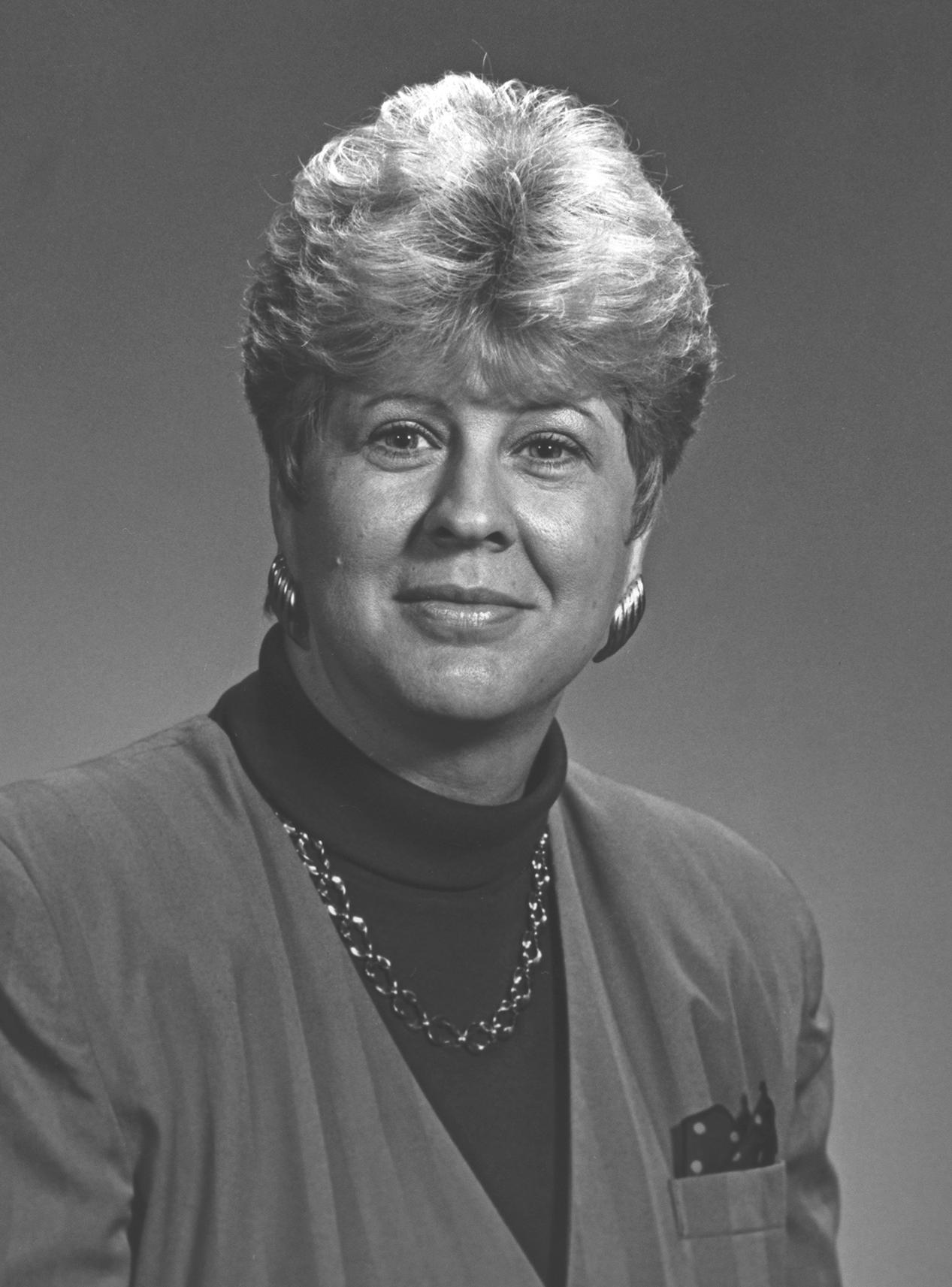
Culp never seriously thought of working for another company. “Why would I want to leave?”
Culp asked. “I had so many opportunities over the years to grow and develop my skills. I had great mentors. The CEOs all had a high regard for human resources, which is so important for developing satisfied employees. I had other job offers, but they never felt like they were right for me.”
Culp admits that retirement is a time of adjustment, but she is looking forward to volunteering, serving on several boards, and spending time with her husband and two adult children.
When asked how she survived through all the CEO transitions, she smiled and said, “I think you have to adapt to their style, you build trust with them and have a voice in some things. But you know, I really haven’t thought about it.”
She may not have thought about it, but it’s clear, Culp demonstrated a deep commitment to the values of the company, a unique adaptability and a focus on the future. .
Failing to invest in upkeep is a recipe for
By Steve MartinThere are numerous ways that success is measured within a business.
Gross sales, customer satisfaction, happy and fulfilled employees. Just simply the good feeling that comes from knowing you are providing a needed or wanted service to those around you.
These can all be good reasons for pressing on in a business venture. The bottom line is an important factor as well, at least for the long-term preservation of the business.
There is another component that I think is important which I have rarely seen addressed. It might not be foremost in people’s minds, especially during a possible recession or at the beginning phases of starting a business.
But I do believe that recognizing this important element can help one in making some important decisions along the way. I am talking about the eventual saleability of the business itself should you ever wish to sell it.
Have you ever dealt with a company, possibly even a wellrespected company that has been in business for many, many years, who gives exceptional service at lowerthan-average prices, and wondered how they were able to do it?
I can think of at least two restaurants in Waterloo Region that fit this classification. They have these things in common:
1. They have been in business for over 50 years and been owned by the same owner or family all that time.
2. The quality of their food and service is very good, consistent and has changed little over the years.
3. Their prices, while not dirt cheap, are well below what you would normally expect for their level of food and service.
4. They have spent very little on their premises over the years. While clean, they could best be described as dated, perhaps even a little bit shabby.
5. They spend little on promotion, probably because for the last 30 years they have not needed to.
So, what is the problem?
I see these companies as deadend companies. If the owner is aware of this, their end game is to run the company until they either die or retire and then let the company die after them, there is nothing necessarily wrong with this approach.
After all, if they are still making an adequate profit, even if it might be smaller, but it is enough to live on and their customers are happy, so be it.
The complication arises if their intent is to eventually sell the company, or even if they plan on carrying on the business to the point where the shabbiness becomes too much and major capital needs to be invested to restore it. Now we have a problem.
Anyone that wishes to purchase the business is going to have to lay out sizeable capital just to buy it, let alone do the repairs that will have to be done. The only way to get a return on that investment will
be to raise prices. Guess what will happen if they raise prices?
Even if they maintain the same quality of service and food, many clients will leave because they will perceive the new owner as being greedy. After all, the old owner was satisfied with less, so why the change?
Over time, the old owners took on a clientele that largely went there because of the price. So price becomes a very big deal.
These customers will not take kindly to a sudden increase. What is interesting is that the old owners did not necessarily start out being cheap.
They paid off their debt and then failed to continue to factor in a return on the investment of their growing capital assets. This is a common mistake companies make because it is often an easy way to compete with newer competitors that do not have that luxury.
It becomes even more tempting to do this when there have been long periods of very low interest rates and the case can be made that the money one gets from selling one’s capital investment would not return much anyway.
In the long run, this is a dangerous way to do business. I would refuse to buy a business that was not factoring in at least a small amount of return for the capital portion of their assets.
Be careful, even in the case of a merger, where you may be buying a business similar to your own. I know of one case where this occurred. A much larger business bought a small-
er business that had run successfully for years as a family business.
But they had kept their prices low by simply not doing anything but the bare minimum in maintenance. Guess what? That division failed in less than five years for all the reasons I have enumerated.
Most people blamed the new owner. I would argue that even if the old owners had kept the place, they would have had to spend millions to bring it up to spec,
which would have necessitated a sudden increase in price. This could have been avoided had those increases happened gradually.
An aside regarding promotional spending … there can be very good reasons not to spend on promotion. For instance, you are busy and are running at capacity. Why spend to promote? All I will say is to be careful.
Look carefully at your customer base. If your clientele is largely

60 and older, you may have a big problem on your hands in a few years. In a world where people move around more than ever, you cannot assume that their children will be around to take it up when they leave.
I recognize that often when a business starts out, the furthest thing from the entrepreneur’s mind is the reselling of their business. This is especially true when a person is young and healthy and appears to have a long life ahead of them.
For some, the very idea that someone else will take their baby that was grown through blood, sweat, and tears is almost revolting. For others, it is simply assumed that a child will carry on where the parents have left off.
Even if that is the plan, it is a good idea to ensure that prices reflect the future needs for capital improvements. Gifting the business to one child when there may be other heirs involved can create its own set of issues.
My advice is this. While it may be the easy thing to do, keeping prices low is probably not a good move if you take the business’s longevity into consideration.
If an owner’s intention is to dissolve the business when they get out and simply sell the real estate as a separate entity, the above advice may apply to a lesser extent. Even then, though, a person might want to take into consideration the overall impression he is leaving with the consumer that will think that his competitors may simply be greedy for needing to charge more.
As in most areas of life, looking at our present-day actions in light of how they will affect the future is always wise.
.
While fewer young couples are getting married in churches these days, church pews are still providing a place for friends and family to watch the exchange of vows, a story in Christianity Today magazine reports.
As churches move or close, event planners are snapping up old pews, which often bridge the gap between young brides who want outdoor weddings and parents who like a traditional touch.
With almost seven in 10 weddings taking place outdoors, churches no longer rank in the top three preferred wedding venues. Banquet halls, barns, and the grounds of historic homes, in that order, are the favored spots for saying “I do,” the story suggests.
For centuries, wealthy people
“rented” pews in churches so their families could have a prominent, and unchanging, seat for Sunday morning worship. Now pews rent for between $100 and $300 each from companies such as Georgia’s I Do Pews, or Colorado’s Now and Forever Vintage Furniture & Church Pew Rentals. Those prices do not include delivery and setup fees.
Liz Kislik’s Workplace Wisdom blog suggests four ways to keep workplace policies flexible enough to keep the employees you want. She encourages bosses to: • be self-questioning if they get pushback on schedules, • ensure that required office presence is always about connection and collaboration,
• show that you value inperson time, and
• learn what employees need without committing to giving them everything they want.
You can read the entire article at: https://lizkislik.com/4-ways-tomake-workplace-policies-flexibleenough-to-keep-the-employees-youwant/

Mountains of discarded clothing are rotting in a Chilean desert.
The South American country receives 59,000 tons of clothing from Europe, Asia, and the United States every year, Sojourners magazine notes.
While some garments are bought by merchants and others are taken to other Latin American nations, damaged garments that cannot be sold are dumped in the Atacama Desert. Al Jazeera estimates that the waste is growing by 39,000 tons a year.
Some innovative entrepreneurs are already working to find more just ends for these fabrics. Ecocitex sources and processes a ton of textile waste each week, converting it into products such as yarn. These products are sold through more than 250 women-led businesses across Chile.
EcoFibra Chile creates insulation panels from textile waste.
Eight nations will account for more than half of the increase in world population by 2050, new United Nations projections suggest. The countries where this population growth will occur are in the Global South: the Democratic Republic of the Congo, Egypt, Ethiopia, India, Nigeria, Pakistan, the Philippines, and Tanzania. .
 By Nathan Good
By Nathan Good
In my work as a pastor, teacher, and leadership coach, one of the most common questions I am asked is, “How can I encourage accountability?”
Businesses build new roles and systems of management. Churches review statements of faith and discipline practices.
Teachers get trained in new methods and theories of classroom management. In all these areas, what worked a generation or two ago no longer seems to work.
I was at a conference recently that had a Panera Bread café close by.
At the time, if you registered for a free subscription, you were given three months of free coffee.
Sign me up!
After our session ended at 1:30 pm, I scooted out to get my coffee.
Following another person through the door, I headed towards the kiosk to order. I heard someone behind the counter saying something but assumed they were talking to the person ahead of me.
As I got to the kiosk, I heard a loud and angry “Harrumph!”
Turning around, I saw a girl behind the counter, in her early twenties, glaring at me. Clearly annoyed she barked, “I said we are closing at two
and aren’t taking any more orders.”
All I wanted was my free cup of coffee. I quickly glanced at my watch, knowing it was only a few minutes past 1:30. I walked towards the counter to ask if I could at least get my free cup of coffee.
Nearing the counter, this employee rudely explained that the next shift of workers had not come in, so they were closing early. I asked whether I could still get my free cup of coffee since they had
shifts is how people decide what is right and wrong. In the 1990s there was a lot of talk in the church about moral relativism and how it was destroying our culture.
But it is not that people today have no morals. Instead, there is a different set of ideals for choosing the right action.
a half hour until the time she had just said they were closing.
She berated me for the request while the other person behind the counter went and got me a cup of coffee. The other customer said, “This seems very rude, could I please speak to your manager?” She pointed towards the corner where we saw at least three other people already in line to speak with him.
Over the past fifty years, our culture has shifted from modernism to postmodernism. One of the clear
Much of western ethics since the 1800s has been based on Immanuel Kant’s ideas. This German philosopher thought there are basic moral laws that can be found and applied to every situation. In the past century, this was called into question. Ethics now look more closely at the situation. People’s stories matter as well as knowing who holds power. Right and wrong are decided based on what is going on, not simply on some moral law.
The Apostle Paul engaged in situational ethics when he said in Galatians 5, “For the entire law is fulfilled in keeping this one command: ‘Love your neighbor as yourself.’”
Most readers will relate to the manager or customer in the story above. We wonder how this young woman could be so rude. We think Panera Bread needs better systems
of accountability for its employees.
But, if she was asked to work until noon and had already stayed an extra hour and a half, this woman was holding her manager accountable. Perhaps she wasn’t doing it well, but this is a story of accountability being practiced in ways we may not expect.
It is not that accountability is dead. In fact, it is practiced often. But it looks very different from the past. So the question becomes, “How do we encourage healthy accountability in the culture that we live in today?”
People often respond in one of two ways when the topic of accountability comes up. Some become guarded and tell stories of people being kicked out of groups or mistreated by angry leaders enforcing the rules. Others boldly talk about a lack of rules today and that we need to be stricter. Both have the same flawed idea about what accountability is.
Healthy accountability is focused on the growth of the person. Healthy accountability holds someone responsible for their commitments and actions in a way that empowers them to grow into the future.
There is a place for discipline, and even punishment, for the good of an ordered society. But this falls short of encouraging and empowering the person to grow. Accountability must include more than simply enforcing the rules.
I use the material in this article for a one-hour workshop on accountability. At this point in the presentation, I take a five-minute break for participants to think about two questions.

1) Where have you grown in the past year?
2) Who helped you grow in
that way?
I have presented this material enough to guess peoples’ answers. Those who help us grow are the ones who stick with us through tough times. They are those who ask curious questions when things are unclear. They are those who love us unconditionally.
Rarely do we grow because someone yelled at us or told us we didn’t belong. Often, we grow because someone helped us set clear expectations and then lovingly called us to a higher standard than what we already had.
Many from a Judeo-Christian background are familiar with Psalm 1 which begins, “Blessed is the
It is not that accountability is dead. In fact, it is practiced often. But it looks very different from the past. So the question becomes, “How do we encourage healthy accountability in the culture that we live in today?”
one who does not walk in step with the wicked or stand in the way that sinners take or sit in the company of mockers, but whose delight is in the law of the Lord.” I memorized this psalm as a boy.
We were taught that to be like a tree planted by streams of water we needed to stay away from bad people. In light of Jesus’ ministry, I always struggled with this teaching.
What if we turn Psalm 1 on its head, though? Jesus was less concerned with being blessed and instead focused on being a blessing.
Looking at Psalm 1 this way raises some questions. When people walk in step with me are they blessed? When people stand in the way of life I have taken, are they heading towards destruction or health? Those who keep company with me, are they growing or becoming stagnant?
Psalm 1 helps us see that we become like those we are around. So, for me to hold others accountable, first I need to grow. The best way to help others improve is to be present with them in their struggles. This is how Jesus lived and it is what he calls us to as well.
Tafadzwa Bete Sasa presents this view of accountability in her Tedx talk Accountability Is a Love Language. (You can see this online at https://www.youtube.com/ watch?v=zVJgy-uGyw4)
Sasa failed several classes in her first year of college. In danger of losing her scholarship, she went to her advisor and shared her grades. Her advisor asked, “What happened?”
Sasa responded that she didn’t know. Her advisor gave her the weekend to think it over and come back with a plan to make sure it
didn’t happen again.
Out of this experience, Sasa offers two questions and a skill that is essential to accountability conversations. The first question is simply, “What happened?” This allows the person to admit and take ownership of the problem.
Next, the one asking must use the skill of active listening. The person being confronted expects judgment. Talking too soon can feel like an attack, making the person become defensive.
When they are defensive, they are unable to think well about what happened. Listening allows them to notice problem behaviors and dig deeper to develop self-awareness of what is happening inside of them.
After they have done this, the second question is, “So what’s the plan?” In her presentation, Sasa says, “It is good intentions with no plan that keeps people in destructive
cycles.” Accountability practiced with patient care is a form of love.
To practice accountability in this way, though, there must be shared expectations. Maurice and Cynthia Phipps talk about setting expectations in their article “Group Norm Setting.” https://www.wcupa. edu/coral/documents/norm.pdf
Every group develops normal ways of being together. They suggest, “Norms in a group will evolve even if nothing purposeful is done, but of course, these norms might be negative.” When norms are set through rules by an authority figure, people tend to find ways to get around them. But when leaders work with the group to create expectations everyone can agree on, those in the group tend to hold one another accountable.
More business leaders are inviting employees to write their own job descriptions. Churches are
moving away from power structures and asking the congregation to discern major decisions together. Schools are using teaching methods that engage students in setting expectations for behavior.
Amid a changing culture, accountability still matters. I am where I am today because, rather than give up on me, I had leaders hold me accountable in these ways. We bless others when we help them grow and become better versions of themselves.
It is an act of love to give people space to figure out what went wrong and how they will do better next time. As followers of Jesus, Christian business owners and leaders can lead the way in creating healthy structures of accountability for tomorrow. .
Nathan Good pastors Swamp Mennonite Church in Quakertown, Pennsylvania. He also works as a leadership coach.

Angels and Entrepreneurs: A Lifestyle Formula for Starting Your Own Business and Riding the Roller Coaster of Entrepreneurship
ByBob Schlegel (Savio Republic 2022, 251 pp, $28 US)
Angels and Entrepreneurs is part biography, part how-to manual for current or aspiring entrepreneurs, and part motivational thesis.

As biography, it tells the remarkable tale of Bob Schlegel, a serial entrepreneur who is the son of a southern Ontario Mennonite farmer. He moved to Texas and along with his partner Myrna, built a chain of upscale nursing and retirement homes.
After selling that business, they built the US’s leading paving stone manufacturer, with sales of hundreds of millions annually.
Schlegel is candid about business success and setbacks. The angels of the book’s title are both heavenly and human beings who he credits with saving him from extraordinary physical and business peril more than once.
He stresses the importance of values, including gratitude and philanthropy, plus having a statement of purpose for any business venture.
His worst business challenge, the collapse of the $540 million sale of Pavestone, had a silver lining after another buyer came forward. Schlegel has gone on to start a logistics firm that he says should hit $200 million in sales this year, and other enterprises.
The Schlegel family are active philanthropists, and the book explains why they give where they do.
All four of their children have launched their own businesses.
The book is a good read. It has lessons for anyone in business or who is interested in the story of someone who has enjoyed extraordinary success and remains interested in “creating companies and projects that do well while also doing good in the world.” .
By Patrick Morley (MIM Press, 2022, 166 pp., $15.95 US)
Books offering advice on how to combat negative thoughts that enter our heads have become a growth industry, with several topping bestseller lists in recent years.
In The Four Voices, Patrick Morley offers a guide to learning how
to classify and deal with voices that are more than self-talk.
Relying heavily on passages from the Bible to buttress his position, he classifies the four voices in the head of Christians. These are the world, the flesh, the devil, and the Holy Spirit.
The reader’s job, he suggests, is to determine which voice is speaking, and to take control of the conversation.
Reprinting theologian Reinhold Niebuhr’s famous Serenity Prayer, he includes not just the familiar lines but a full version that includes the admonition to surrender to God’s will in order to be reasonably happy in this life and supremely happy in the next.
Morley outlines a series of habits, virtues, and spiritual disciplines to help overcome selfcenteredness and the deceptions thrown at believers by the voice of the devil.
The world, in his explanation, is any philosophy that puts the self at the center. The flesh is our baser, prideful nature.
The chapters on the Holy Spirit, one on cultivating a sensitivity to spirit leading, and another on an imagined letter from the spirit to each reader, are both the book’s most challenging sections and the most helpful.
The Four Voices contains charts and exercises for readers to complete and questions for use in a small group study. .

M. Davis (Masthof Press, 2022, 199 pp., $16 US)
Melodie Davis’s reflections on her notable career provide a fascinating window into a time when Mennonite theology had a place on mainstream radio and TV.
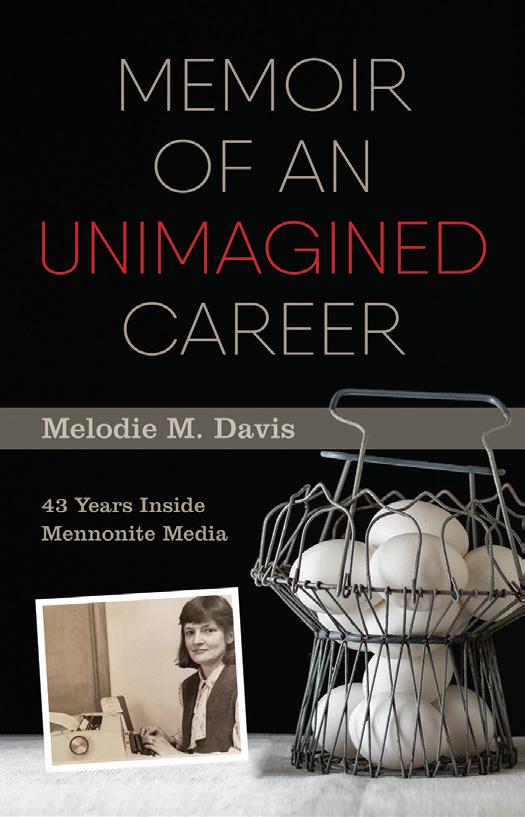
As a 16-year-old farm girl collecting eggs in a chicken coop, she decided that her career goal was to become a Christian writer. She attained that goal, and much more than she could have imagined, during more than 40 years working for Mennonite Broadcasts, Mennonite Media and the present-day MennoMedia.
Davis worked during a time when Mennonites and other faith
groups had regular radio programs and the opportunity to do national TV public service pieces. From a college work term at a public broadcasting station in Harrisonburg, Virginia, she went on to ghostwriting, hosting radio shows, writing a syndicated newspaper column, producing a video curriculum, and editing and authoring books.
A video documentary series she worked on, Journey Toward Forgiveness, aired on ABC-TV.

For people who grew up in the Mennonite tradition, the book contains stories about the Mennonite Hour program and well-
known names from past decades such as Margaret Foth, David Augsburger, and Art McPhee.
Davis highlights interesting projects she helped with, and outlines changes that led to de-emphasizing of broadcasting and video production, plus the eventual merger with the downsizing Herald Press book publisher.
Her values shine strongly throughout, and she is frank in discussing the challenges of being faithful during times of workplace turmoil, including organizational downsizing due to financial realities. .
